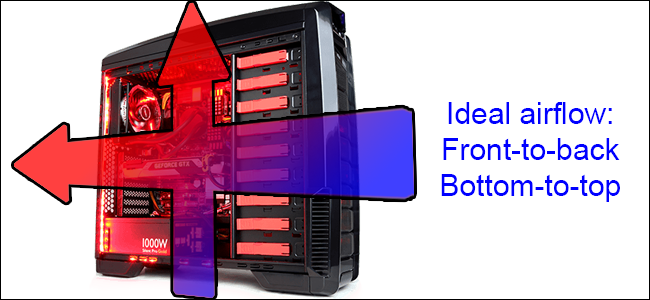High static pressure fans are desirable for all intake fans, radiator fans or heatsink fans. All of those types of fans will usually encounter significant resistance to airflow, so having fans with higher static pressure is desirable in those applications.
Exhaust fans do not face much resistance, so using fans with high static pressure is not necessary in those locations, however, USING them will not hurt anything either. Technically, you generally want fans with the highest CFM and highest static pressure you can reasonably afford to purchase for intakes, heatsinks or radiators. Exhaust fans, the static pressure is not very important but high airflow (CFM) is generally desirable.
For most configurations 2 x120mm, 2 x140mm or some combination of the two for both intake and exhaust are sufficient. WHEN possible, using a 140mm fan is much preferred as you are able to move an equivalent amount of air as a 120mm fan at a lower RPM resulting in a lower overal noise level.
A purely negative pressure configuration offer the BEST cooling performance, IF you are also bringing in enough ambient air for the graphics card and CPU cooler (IF you are using an air cooler on the CPU, otherwise, much of the configuration design mentioned here might need to be mildly altered) by way of intake fans.
Positive pressure configurations offer dust suppression. Neutral pressure, with an equal, or nearly equal amount of airflow coming in as what is going out, offers a good solution that meets both types halfway. This is the MOST recommended configuration. If you want the best cooling performance, then you might not only add another exhaust fan to that top rear position like I said, but make sure it is a high CFM model AND also maybe replace the current rear exhaust fan with a model that has a higher CFM rating as well.
In reality we like to see a NEUTRAL pressure arrangement, where there is roughly the same number of intake and exhaust fans with somewhat similar airflow characteristics aside from the fact that we want or prefer to see higher static pressure specs on intake fans.
BeQuiet fans are only good in regard to noise levels, and that is only because they tend to run their fans at a maximum RPM that is significantly lower than most other comparably sized fans. They are good for systems that don't need great cooling and silence is more important, although you can technically do that with any fan by adjusting the fan curve in the bios and capping it at a speed that is acceptable.
If performance is more important, I would stick to fans by Noctua (And yes, they have black models now so you are not stuck with baby poop brown), Thermalright (Not to be confused with Thermaltake) or even possibly the EVGA FX 140 or 120m fans which move a lot of air but are a bit noisier than these others. Corsair Maglev fans are also fairly good.
There are many fans out there which are more than sufficient for an average build without the need for an particularly high performance fan, but when you want a good fan you can't go wrong with the above recommendations.




